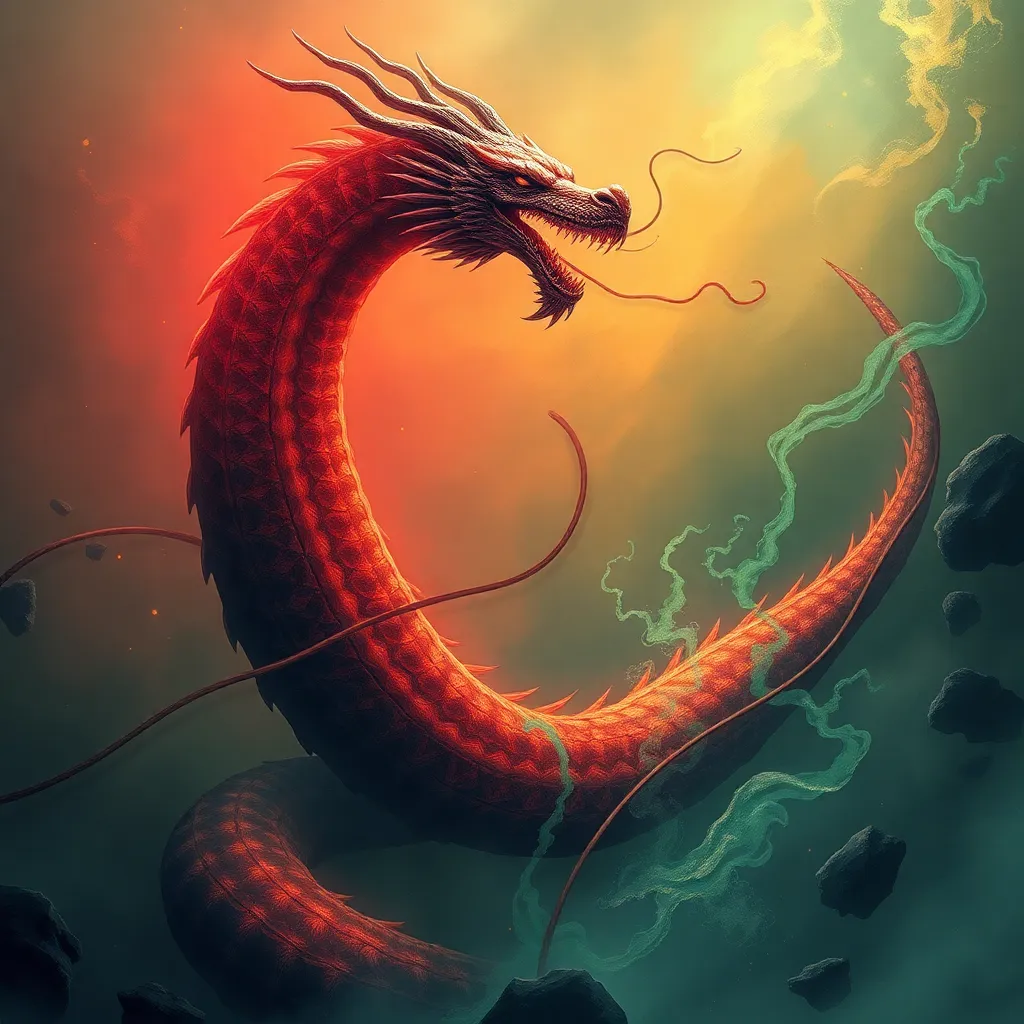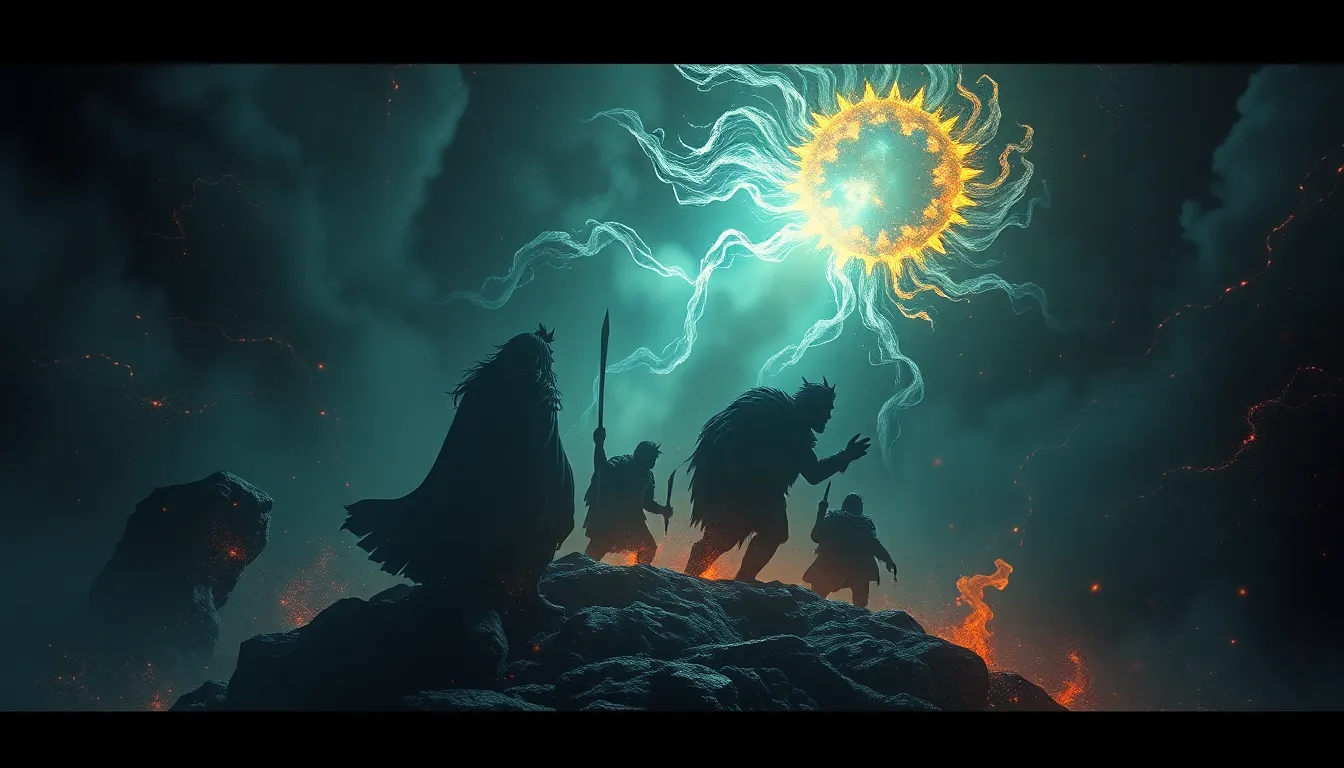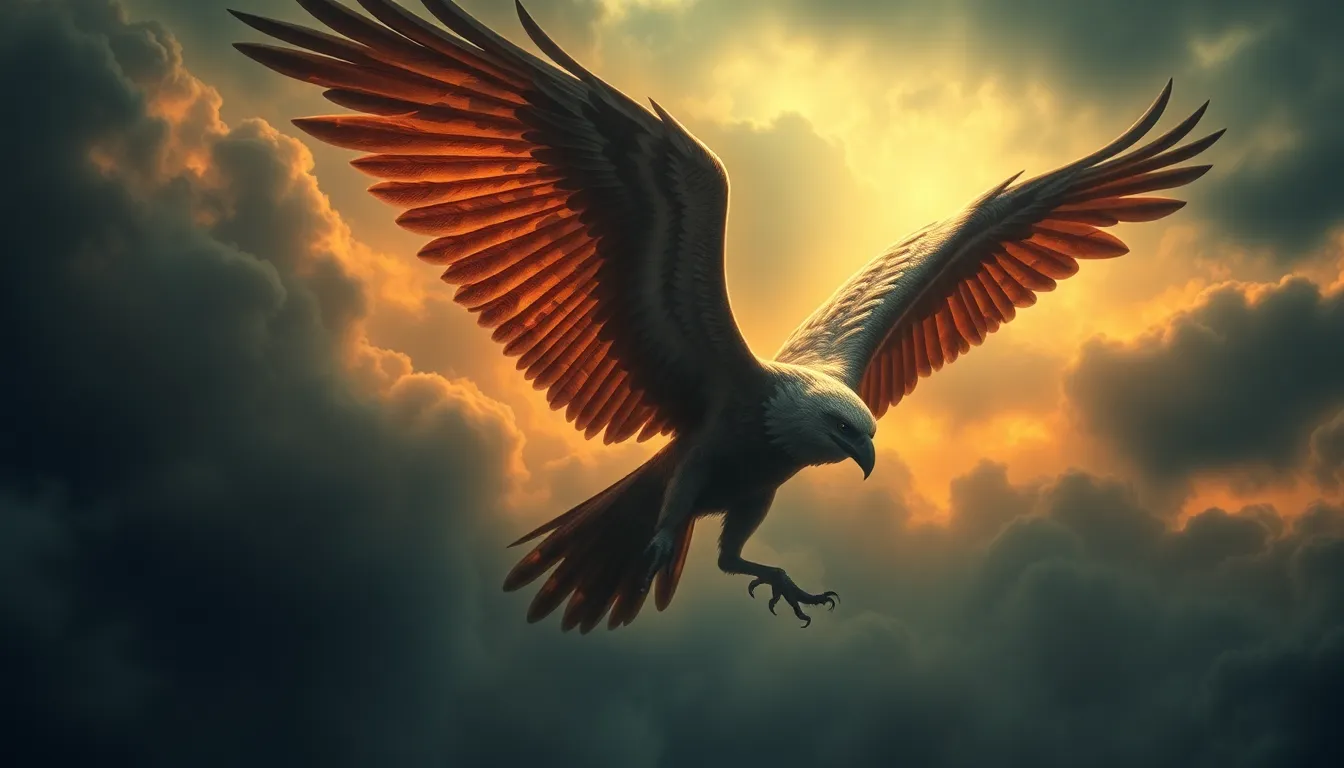The Dragon and the World Serpent: Comparing Jörmungandr to Eastern Dragon Lore
I. Introduction
Dragons have captivated human imagination for centuries, representing a myriad of cultural beliefs, values, and narratives across different societies. From the fierce and destructive beasts of the West to the benevolent and wise creatures of the East, dragons embody a complex array of symbolism and meaning. In this article, we will explore Jörmungandr, the World Serpent from Norse mythology, and compare it to Eastern dragon lore from cultures such as Chinese, Japanese, and Indian traditions. Our aim is to highlight the similarities and differences between these two iconic mythical creatures, illustrating their significance in their respective mythologies.
II. Origins and Cultural Context
A. Historical background of Jörmungandr in Norse mythology
Jörmungandr, known as the World Serpent, is a significant figure in Norse mythology. According to the myth, Jörmungandr is the offspring of Loki and the giantess Angerboda. He was cast into the ocean that surrounds Midgard (the realm of humans) by Odin, where he grew so large that he encircled the world, biting his own tail. This image of the serpent eating its own tail, known as the Ouroboros, symbolizes the cyclical nature of life and the interconnectedness of all things. Jörmungandr plays a crucial role in the events of Ragnarök, the end of the world in Norse mythology, where he battles Thor, the god of thunder.
B. Overview of Eastern dragon lore in cultures such as Chinese, Japanese, and Indian
In contrast, Eastern dragon lore varies across cultures but generally depicts dragons as benevolent and wise beings. In Chinese mythology, dragons are revered as symbols of power, strength, and good fortune. They are often associated with water and are believed to control rain and floods. Similarly, in Japanese mythology, dragons are seen as protectors of the land and are often linked to agricultural prosperity. In Indian traditions, the serpent figure, known as Naga, represents both fertility and the underworld, embodying the duality of life and death.
C. The role of geography and cultural beliefs in shaping these myths
Geography plays a significant role in shaping the characteristics and representations of dragons in different cultures. The rugged landscapes of Scandinavia, where Norse mythology originated, fostered a worldview that emphasized chaos and struggle, which is reflected in the portrayal of Jörmungandr. Conversely, the agricultural societies of East Asia, which depended heavily on rain and water, led to the reverence of dragons as benevolent forces capable of ensuring fertility and prosperity.
III. Physical Characteristics and Symbolism
A. Description of Jörmungandr, the World Serpent
1. Size and form
Jörmungandr is described as an enormous serpent capable of encircling the entire world. His vastness is a literal embodiment of the chaos that lies beyond the order of the cosmos. The imagery of a serpent wrapping around itself serves as a powerful symbol of eternity and the cyclical nature of existence.
2. Symbolic meanings of the serpent
Jörmungandr symbolizes chaos, destruction, and the inevitable cycle of life and death. His confrontation with Thor during Ragnarök signifies the battle between order and chaos, a theme central to Norse cosmology.
B. Characteristics of Eastern dragons
1. Diverse forms and attributes
Eastern dragons often take on various forms, including long, serpentine bodies, four legs, and sometimes even wings. They are typically depicted with scales, antler-like horns, and a mane, representing their majestic nature. Each type of dragon—from the Chinese Lung to the Japanese Ryu—has distinct attributes and powers.
2. Symbolism of power, wisdom, and benevolence
Eastern dragons symbolize power, wisdom, and benevolence. They are often associated with water and are seen as guardians who bring prosperity and good fortune. Unlike the destructive nature of Jörmungandr, Eastern dragons embody harmony and balance within the natural world.
IV. Mythological Roles and Representations
A. Jörmungandr’s role in Norse mythology and Ragnarök
In Norse mythology, Jörmungandr’s role is pivotal during Ragnarök, where he represents the chaotic forces that threaten the gods and the order of the cosmos. His battle with Thor is not only a clash between two powerful beings but also a metaphorical representation of the struggle between chaos and order.
B. Eastern dragons’ roles in folklore, mythology, and as cultural symbols
Eastern dragons serve various roles in folklore and mythology, often depicted as protectors of the earth, deities of water, or symbols of imperial authority. They are frequently invoked in rituals and celebrations, reflecting their significance in cultural identity and spiritual beliefs. In Chinese culture, the dragon is a symbol of the emperor and represents the ultimate power and authority.
C. Comparative analysis of their functions within their respective mythologies
While Jörmungandr embodies the chaotic aspects of existence and serves as an antagonist in Norse mythology, Eastern dragons are often portrayed as benevolent figures that foster harmony and prosperity. This contrast highlights the differing cultural values and worldviews that shape the narratives surrounding these mythical creatures.
V. Themes of Chaos and Order
A. Jörmungandr as a representation of chaos and its relationship with order
Jörmungandr’s existence signifies the chaos that lies beyond the confines of order and stability. His very being is a reminder of the potential for destruction that exists within the universe, culminating in the cataclysmic events of Ragnarök.
B. Eastern dragons as mediators of harmony, balance, and prosperity
In contrast, Eastern dragons symbolize harmony and balance, acting as mediators between heaven and earth. Their presence is often linked to agricultural prosperity, rain, and the cyclical nature of life, embodying the belief that chaos can be transformed into order through respect and reverence.
C. Exploration of how these themes manifest in their respective stories
The themes of chaos and order manifest distinctly in the narratives surrounding Jörmungandr and Eastern dragons. While Jörmungandr’s tale culminates in a battle that symbolizes the end of an era, Eastern dragons often contribute to the continuity of life and the cyclical renewal of seasons, reinforcing the importance of balance in the natural world.
VI. Interactions with Humans and Other Deities
A. Jörmungandr’s encounters with gods and heroes in Norse tales
Jörmungandr’s interactions with the gods, particularly Thor, are marked by conflict and tension. His encounters are often violent, culminating in a bitter rivalry that reflects the struggle between chaos and divine order. These myths serve as cautionary tales about the dangers of chaos and the importance of maintaining balance.
B. The relationship between Eastern dragons and humans, including worship and reverence
Conversely, Eastern dragons are often revered and worshiped by humans. They are seen as protectors and benefactors, with many festivals and rituals dedicated to honoring these majestic beings. This relationship fosters a sense of harmony between humans and the natural world, emphasizing the importance of coexisting with these powerful forces.
C. Comparisons of these interactions and their implications in mythology
The stark contrast between Jörmungandr’s antagonistic relationships and the reverence shown to Eastern dragons highlights the differing cultural attitudes towards these beings. While one symbolizes a threat to order, the other represents a source of life and prosperity, showcasing how mythology reflects the values and beliefs of a culture.
VII. Modern Interpretations and Cultural Influence
A. Jörmungandr in contemporary media and literature
In modern times, Jörmungandr has appeared in various forms of media, including literature, films, and video games. His portrayal often emphasizes his role as a formidable adversary, reinforcing the themes of chaos and destruction. Works such as Neil Gaiman’s “Norse Mythology” and the Marvel Cinematic Universe have brought renewed attention to this iconic figure, exploring the complexities of his character.
B. The enduring legacy of Eastern dragons in global culture
Eastern dragons continue to hold a prominent place in global culture, appearing in art, literature, and festivities such as the Chinese New Year. Their imagery is often associated with strength and good fortune, maintaining their status as beloved cultural icons.
C. How these mythological figures continue to inspire art, literature, and popular culture
Both J




